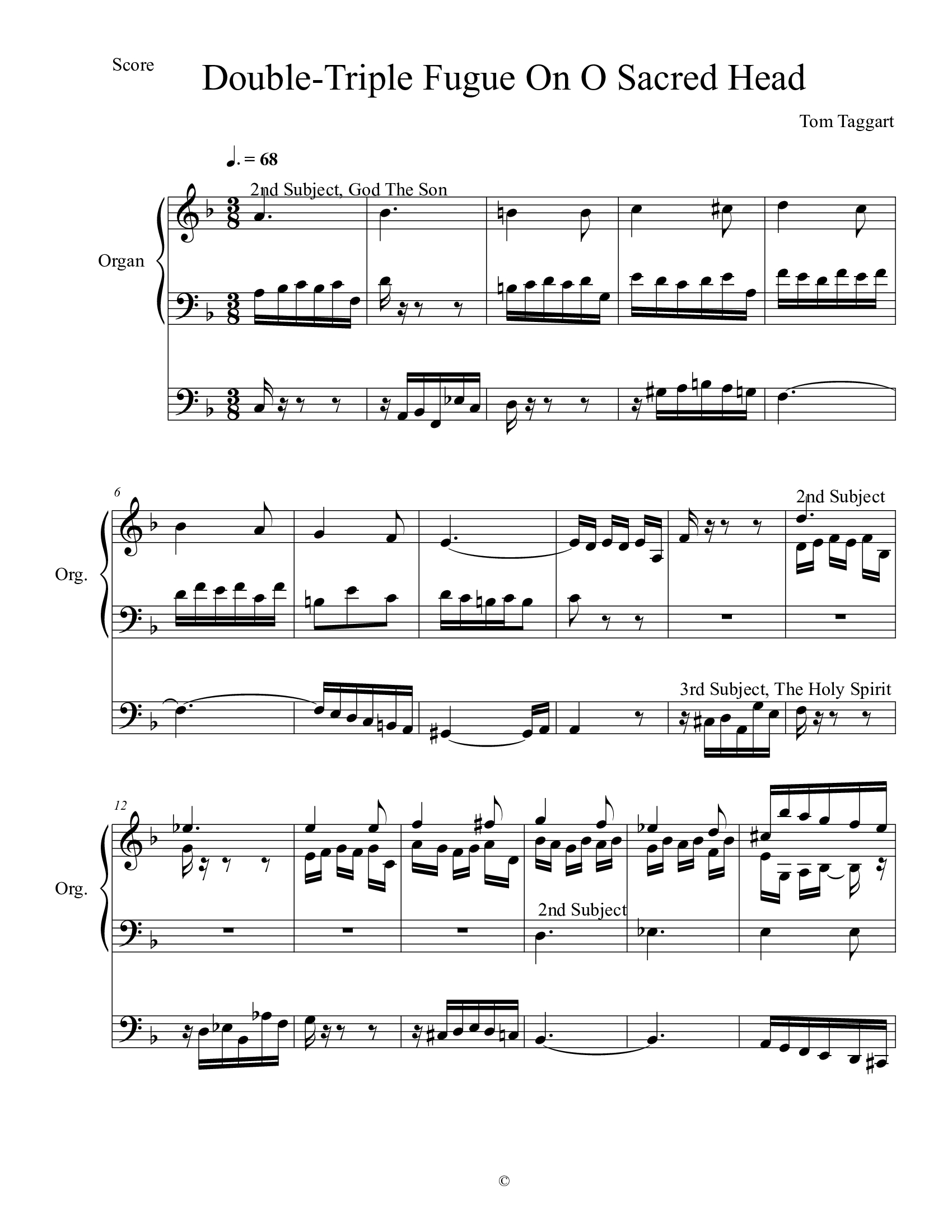Prelude And Double Triple Fugue On O Sacred Head
A powerful, multi-fugue meditation on the Trinity—rich in counterpoint, symbolism, and spiritual gravitas
About This Piece
This monumental composition explores theological mystery through rich musical architecture. The Prelude and Double Triple Fugue on O Sacred Head is a deeply symbolic, highly structured work that unites musical rigor with narrative and spiritual depth. The music moves from awe-inspiring grandeur to expressive dialogue, tracing the arc of divine intention in sound. Rather than simply setting the Passion Chorale, the piece reimagines it as a foundation for theological storytelling. Each fugue section not only explores contrapuntal development but represents a distinct person of the Trinity. The integration of triple fugue structures—layered subjects, inverted statements, and canonic interplays—demands both intellectual engagement and spiritual reflection. Yet for all its complexity, the music communicates with clarity, drawing listeners into a space of reverent awe. This is music as theology—structured, soaring, and sublime. Whether heard in recital or during Lent, it is a compelling meditation on sacrifice, love, and divine unity.
Piece Details
Notes from the Composer
All four sections of the Prelude And Double-Triple Fugue On The Passion Chorale may present themselves as recital pieces or large-scale preludes/postludes during Lent. The Prelude is a tone poem depicting God's salvation plan for fallen mankind. The huge opening places God upon His throne in all His majesty. He then turns to His Beloved Son where They tenderly discuss Jesus' mission to save all creation. The Holy Spirit laments. Then the Father announces the Salvation Plan to the holy angels. There follows a conversation amongst the Trinity. Lastly, the Salvation Plan is placed into Holy Writ. The first fugue, God The Father, in a minor and 4-1 meter quotes the first phrase of O Sacred Head as its theme. Development in augmentation, diminution and multiple canons follows. The second fugue, God The Son Fully Man, is in d minor and 4-2 meter, featuring an upward-climbing chromatic theme from la to mi is highly energetic. Through multiple stretti as stated and inverted, its counter-subject becomes a second fugue as God The Son Fully God. Both then are sung against the Father's theme as the first triple fugue. The third fugue, God The Holy Spirit, is in e minor and 3-8 meter, trumpets with fire across heaven and earth. A bravura pedal solo then presents all three subject as the second triple fugue.
Additional Notes
- •Phrygian Mode: The use of Phrygian tonality lends the piece an ancient, solemn character—evocative of early church chant traditions.
- •Triple Fugue Structure: Both the second and third fugues evolve into triple fugues, stacking themes to represent divine unity and relational complexity.
- •Theological Portraiture: Each fugue corresponds to a person of the Trinity—Father, Son (in two natures), and Spirit
